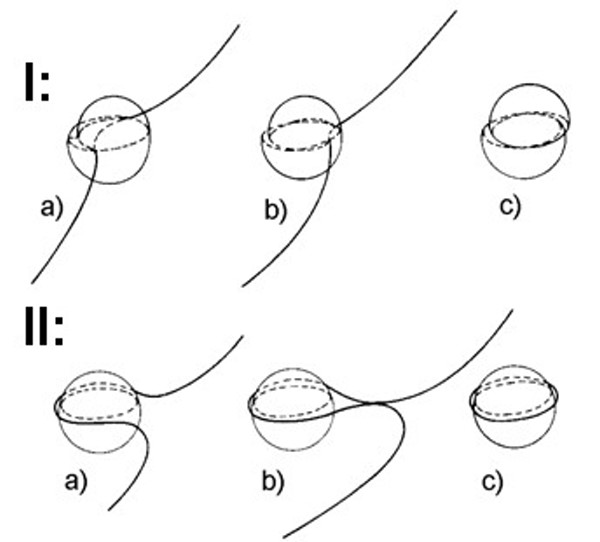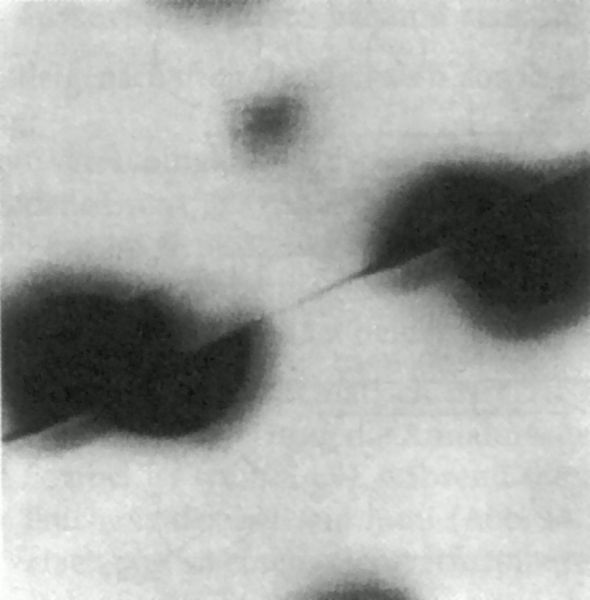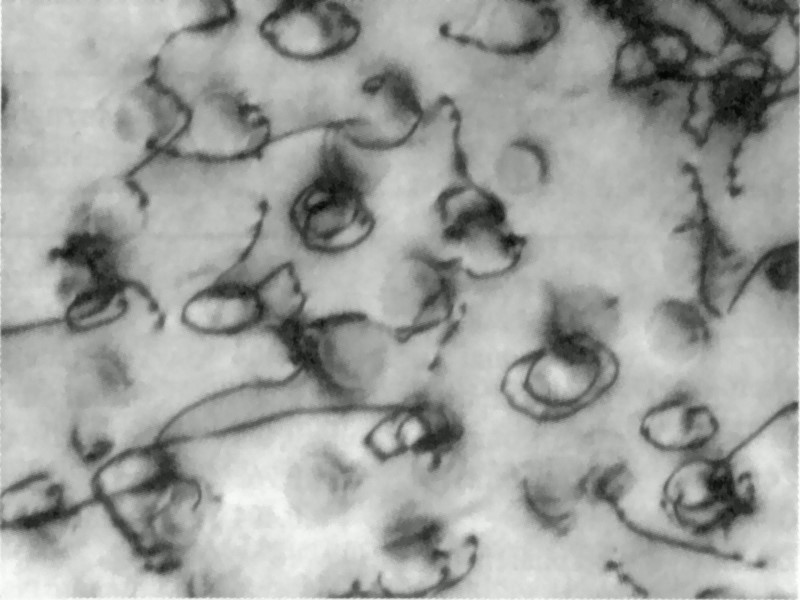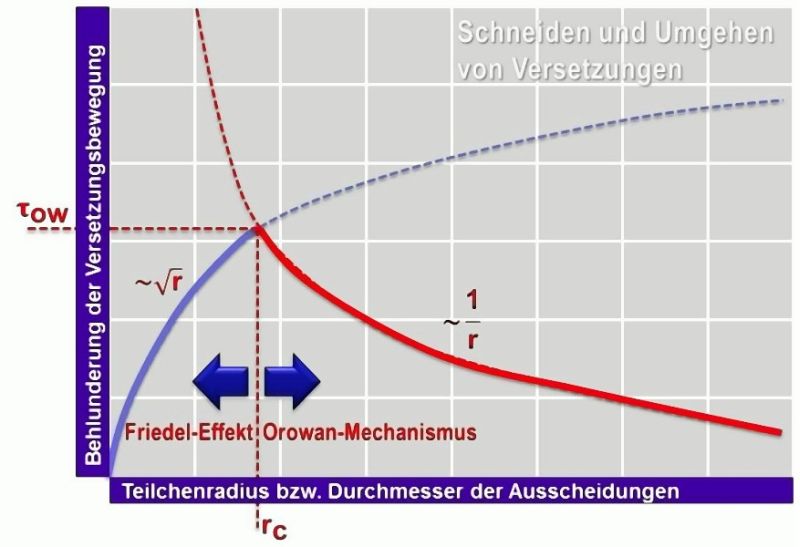Orowan mechanism
The effect of a precipitate on the movement of dislocations essentially depends on its strength and size. The two boundary cases in the interaction with dislocations are described by the Friedel effect and the Orowan mechanism.
The formation of precipitations is dependent on temperature and time and usually occurs in a discontinuous manner. While the alloy components first exhibit an irregular distribution, they accumulate at preferred positions in the lattice at elevated temperatures, leading to the formation of local superstructures such as short-range separation, one-phase separation or clustering (Fig. 1). This maintains the lattice and strains it. At a sufficient time and temperature, so-called Guinier-Preston zones (GP zones) can be formed in the solid solution which have a similar strengthening effect like coherent precipitations.
If intermediary compounds are formed instead, this results in two-phase separations with a phase boundary (Fig. 2).
If the precipitated particle is small and not overly hard, it is sheared by the dislocation as per the Friedel effect to form an antiphase boundary (Fig. 3-I). In contrast to this, the dislocation line continues to bend around the particle according to the Orowan mechanism until it is enclosed completely and the dislocation can move on, leaving a dislocation ring around the bypassed particle (Fig. 3-II). This can primarily be observed with large, hard precipitations.
If a particle is coherent, it is mainly sheared by the location, whereas incoherent parts are rather subject to bow-out by the Orowan mechanism, leaving dislocation rings, as it is difficult for a dislocation to overcome the phase boundary between the host lattice and the incoherent precipitation (see Fig. 4 and Fig. 5).
However, the shearing stress rises with an increasing √r. Therefore, it cannot become greater than the Orowan stress τOW as the dislocation then requires less energy to bow out between precipitates. Thus, for the same type of particle, resistance depends on the precipitate’s diameter, i.e. the particle size (see Fig. 6).
Adjusting particles to the critical particle size rc is the aim of hardening. It should be noted that rc does not depend on the percentage of the precipitated phase.
Additional references:
Hardening
Heat treatment of hardenable aluminum casting alloys
Strengthening mechanisms
Literature references:
1 Gerold, V.: Precipitation Hardening; Dislocations in Solids; Vol. 4, North-Holland Publishing Company, Amsterdam, New York, Oxford, 1979.
2 Bargel, H.J.; Schulze, G. (ed.): Werkstoffkunde; 10. edition, Springer Verlag, Berlin, Heidelberg, 2008.
3 H. Rockenschaub et al., Neue Wärmebehandlung für beste mechanische Eigenschaften im Aluminium-Druckguss, Giesserei 93 (2006) no. 7, p. 20-33.







